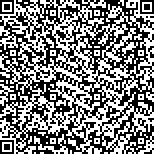张航,陈伟观,施维,等.小脑间歇性θ爆发刺激后行机器人辅助步态训练对前交叉韧带重建术后患者下肢功能的影响[J].中华物理医学与康复杂志,2025,47(10):922-928
扫码阅读全文

|
| 小脑间歇性θ爆发刺激后行机器人辅助步态训练对前交叉韧带重建术后患者下肢功能的影响 |
|
| |
| DOI:10.3760/cma.j.cn421666-20250225-00172 |
| 中文关键词: 间歇性θ爆发刺激 小脑 机器人 前交叉韧带重建术 |
| 英文关键词: Intermittent theta burst stimulation Cerebellum Robots Anterior cruciate ligament reconstruction |
| 基金项目:江苏省科学技术协会调研课题(JSKXKT2022048);南通市卫生健康委员会项目(QN2022021);南通大学临床医学专项科研基金项目(2024JY003) |
|
| 摘要点击次数: 538 |
| 全文下载次数: 381 |
| 中文摘要: |
| 目的 观察小脑间歇性θ爆发(iTBS)刺激后行机器人辅助步态训练(RAGT)对前交叉韧带重建术(ACLR)后患者下肢功能的影响。 方法 采用随机数字表法将80例ACLR术后患者分为对照组20例、磁刺激组20例、机器人组20例、联合组20例。4组患者均接受常规康复训练,机器人组在常规康复训练前行RAGT,磁刺激组在常规康复训练前行小脑iTBS,联合组则先进行小脑iTBS,再行RAGT,最后进行常规康复训练。治疗频次均为每日1次,每周3 d,连续治疗4周。于治疗前和治疗4周后(治疗后)检测4组患者患侧膝关节屈伸肌群的峰力距比值(H/Q)和伸膝肌峰力距(PT),并计算其膝重现角度差值,同时进行膝关节功能评估和Berg平衡量表(BBS)评分。 结果 治疗后,4组患者的股四头肌PT值和H/Q%较组内治疗前均显著改善(P<0.05),且联合组治疗后的股四头肌PT值和H/Q%均显著优于对照组、磁刺激组和机器人组治疗后(P<0.05)。治疗后,4组患者的重现角度差值较组内治疗前均显著改善(P<0.05),且联合组治疗后的重现角度差值为(5.00±1.21)°,均显著优于对照组、磁刺激组和机器人组治疗后(P<0.05)。治疗后,4组患者的Lysholm和BBS评分较组内治疗前显著提高(P<0.05)。且联合组治疗后的Lysholm和BBS评分较对照组、磁刺激组、机器人组治疗后均显著改善(P<0.05)。 结论 小脑间歇性θ爆发刺激后行机器人辅助步态训练可显著改善前交叉韧带重建术后患者膝关节的功能和下肢平衡功能。 |
| 英文摘要: |
| Objective To observe the effect of robot-assisted gait training (RAGT) supplemented with intermittent theta burst stimulation (iTBS) of the cerebellum in restoring lower limb function after anterior cruciate ligament reconstruction (ACLR). Methods Eighty ACLR patients were randomly divided into a control group, a magnetic stimulation group, a robot group and a combined group, each with 20 members. The robot and magnetic stimulation groups underwent RAGT and cerebellar iTBS before conventional training, while the combined group received iTBS followed by RAGT and then conventional training. The treatments were administered once a day, three days per week for four weeks. Before and after the intervention, the peak torque ratio of the knee flexors and extensors (H/Q), peak torque of the knee extensors (PT), and knee repositioning angle difference were measured. Knee function and balance (using the Berg Balance Scale (BBS)) were also assessed. Results The combined group demonstrated significantly better quadriceps PT and H/Q% than the other 3 groups. Knee repositioning angle difference improved significantly in all of the groups after the treatment, with the combined group showing the smallest difference (5.00±1.21)°, significantly better than the other three groups. Lysholm and BBS scores had also improved significantly in all of the groups, with the combined group′s improvements again significantly better than those of the other groups. Conclusion Intermittent theta burst stimulation of the cerebellum combined with robot-assisted gait training can significantly improve knee function and balance after ACLR. |
|
查看全文
查看/发表评论 下载PDF阅读器 |
| 关闭 |